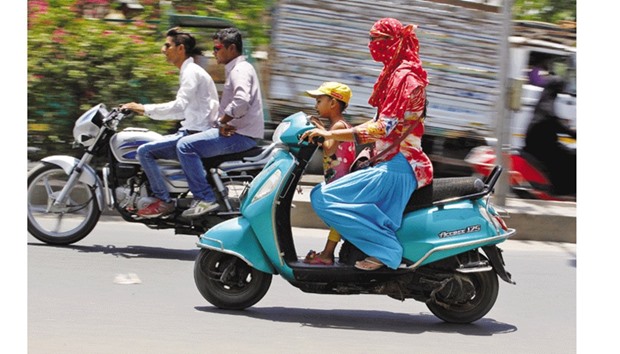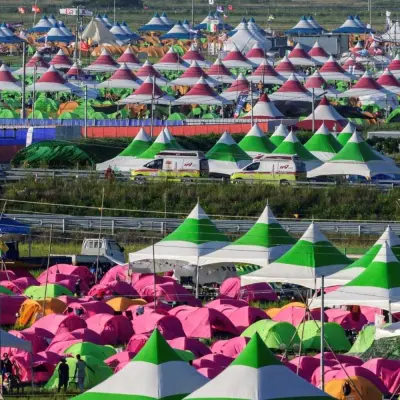Temperatures have soared to a scorching 51 degrees Celsius in one city, meteorologists said yesterday, with the ferocious heat setting a new national record.
Northern Phalodi wilted as the mercury reached a new high, equivalent to 123.8 Fahrenheit, beating a 60-year-old record.
“Thursday was the hottest temperature ever recorded in the country...51 degrees in Phalodi,” said B P Yadav, a director of the India Meteorological Department (IMD).
Hundreds of people die every year from the heat in the country, with May and June usually the hottest months.
The latest record high came as the IMD issued warnings of “severe heat wave” conditions across large parts of the north and west, including the capital Delhi, where temperatures hit 47 degrees Celsius earlier this week.
Zoo animals in the capital were treated to cold baths and given electrolytes to prevent dehydration.
Demand for electricity in the city of 25mn people surged to a record high on Thursday as sweltering residents turned on their air conditioners.
Police officers on the beat were given oral rehydration solution and special “cooling scarves” containing water-absorbent crystals to keep their body temperature down, local papers reported.
The capital’s hospitals have seen a spike in cases of heatstroke, while authorities in many states have ordered schools to break for summer earlier than normal due to the heatwave. Temperatures in northern India regularly hit the high 40s in May and June, but topping 50 degrees is unusual.
India declares a heatwave when the maximum temperature reaches 45 degrees Celsius, or five degrees higher than the average for the area in previous years.
Ahmedabad recorded its hottest day in a century when the mercury touched 48 degrees Celsius.
The heatwave comes as the country faces its worst water crisis in decades, with about 330mn people, or a quarter of the population, suffering from drought after two weak monsoons.
Drinking water is running short in many states and poor rains have prompted extreme measures, including stationing armed guards at reservoirs and sending water trains to the worst-affected regions.
Officials have forecast an above-average monsoon this year, offering hope for the struggling agriculture sector that employs about 60 % of the population.
But the monsoon is only forecast to hit Kerala on June 7 - six days later than usual - before sweeping across the country. That means it will be weeks before the cooling rains reach the arid plains.
The dry conditions have aided the spread of forest fires that recently swept through the hills of Uttarakhand and part of Himachal Pradesh.
But elsewhere in the country there were warnings of floods as Cyclone Roanu approached the east coast after causing havoc in neighbouring Sri Lanka.

A woman shields her face from the sun as she rides her scooter in Ahmedabad yesterday.


